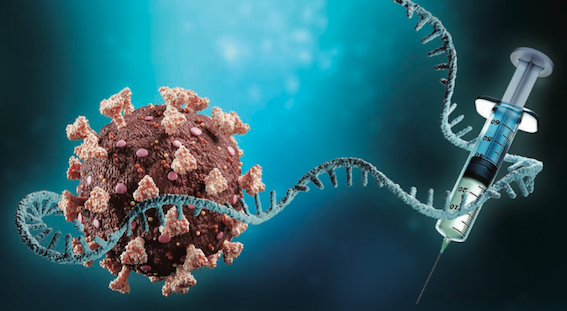Welcome Spike In mRNA Tech?
October 01, 2022 | Saturday | Features | By Sanjiv Das
At least three decades in the making, mRNA vaccine technology has come a long way indeed. While many researchers and scientists worked on mRNA technology, tirelessly burning the midnight oil, a few names do come to the forefront. Dr Robert Malone, developmental biologists Paul Krieg and Douglas Melton, and molecular biologists Tom Maniatis and Michael Green have been the notable researchers who paved the way for this technology. At the same time, there are doubts raised about the safety and efficacy of mRNA vaccines. Moreover, challenges associated with the manufacture and the logistic needs of the mRNA vaccines are also some of the areas that need more focus and innovation. Let's dig deeper into the world of mRNA tech.
image credit- shutterstock
With the launch of India’s first mRNA vaccine by Pune-based Gennova Biopharmaceuticals, India has something to cheer for. The Drug Controller General of India (DCGI) has given its consent in June 2022 for a restricted emergency use for the country’s first home-grown mRNA COVID-19 vaccine — GEMCOVAC-19. This is an achievement of one-of -its-kind as Gennova Biopharmaceuticals is among the few of the companies in the world that have undertaken the manufacturing of mRNA vaccines for various diseases. The vaccine is stable at 2-8°C.
The company noted that GEMCOVAC-19, available as a lyophilised powder, uses Spike (S)-protein of the virus as antigen. One dose of 0.5 ml contains the mRNA 10 μg, DOTAP 0.3 mg, Squalene 0.376 mg, Sorbitan Monostearate 0.372 mg, Polysorbate-80 0.372 mg, Citric acid monohydrate 1.05 mg and Sucrose 50 mg. The GEMCOVAC-19 has been used in Phase I, II and III clinical trials, a number of participants received one or two doses in Indian trials. The Phase I clinical trial was conducted in 82 healthy subjects between the age of 18 and 70 years. Three dose strengths of 5 μg, 10 μg and 25 μg were compared with placebo.
GEMCOVAC-19 is indicated for active immunisation of individuals ≥18 years old for the prevention of COVID-19. The vaccine should be administered in two doses, the second dose after 28 days of the first dose. A volume of 0.5 ml should be administered intramuscularly. However, there is no safety, immunogenicity or efficacy data to support interchangeability of GEMCOVAC-19 with any other COVID-19 vaccines.
Messenger RNA (mRNA) vaccines have seen a steady upsurge in demand for new technologies thanks to the COVID-19 pandemic. The pandemic has also led to the successful development and utilisation of mRNA vaccines. Though, globally, only a handful of companies are involved in manufacturing of mRNA vaccines, the technology is expected to play a pivotal role in developing a support system for other technology platforms such as CART-T cell therapies or CRISPR-Cas gene-editing therapies.
Accessibility and sustainability
At present, around 90 lead developers of mRNA vaccines have been identified in a global landscape evaluation. These lead developers have 137 mRNA vaccine candidates in the pipeline; 76 per cent in preclinical/exploratory and 24 per cent in clinical development. However, this is rapidly changing. The majority of mRNA vaccine development is being led by biopharma companies based in Asia and Oceania or North America. Moderna will build its first mRNA production facility in the Southern Hemisphere at Clayton in Melbourne’s south-east and is expected to produce up to 100 million vaccine doses each year in Australia, including COVID-19, influenza and respiratory syncytial virus (RSV).
Though the pandemic has opened avenues for more research on mRNA vaccines for COVID-19 treatment, research activities were already undertaken for other diseases as well. The advantage of an mRNA vaccine is that a smaller dose is required given that the antigen (spike protein) will be created inside the body itself.
Only limited to covid treatment?
Before the COVID-19 pandemic, the commercialisation of mRNA vaccines was focussed on high-cost personalised cancer vaccines, and prophylactic vaccine development was slow and limited. With the demonstration of large-scale manufacturing of mRNA vaccines during the COVID-19 pandemic, the creation of local manufacturing capabilities holds promise for more equitable access to COVID-19 and other vaccines.
Click here to read the full story....
Sanjiv Das
(sanjiv.das@mmactiv.com)










